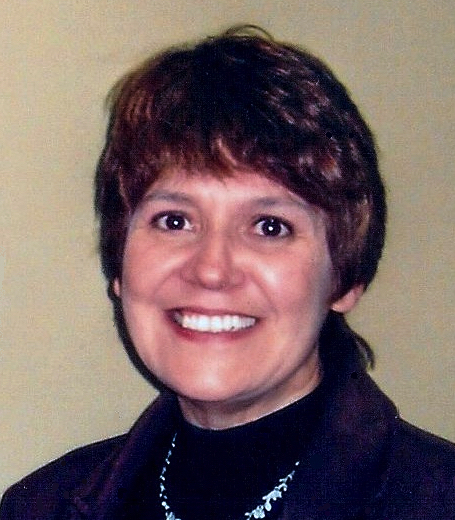20 Legendary Lines from Favorite Hymns to Lift You Now

In our fast-paced, chaotic reality of what feels like increasing unknowns (and sometimes even panic)...it's truly comforting to lean on God's promises in scripture and song.
Lifting your voice in praise and worship to the One who knows the way, can carry you through whatever may be stopping you from setting your mind on things above (Col. 3:2). Much like in any of our lives, there's a true story behind each of these songs that speaks of God's power and love.
In no particular order of priority, here are 20 legendary lines from beloved worship songs that are worth revisiting—and even memorizing—to uplift your heart and soul.
Photo Credit: ©GettyImages/AaronAmat
1. Because He lives, I can face tomorrow...

1. Because He lives, I can face tomorrow...
SLIDE 1 OF 10
...Because I know He holds the future, and life is worth the living, just because He lives.
Because He Lives was written by Bill and Gloria Gaither. In the late 60’s while expecting their third child, the Gaithers were going through a traumatic time. Bill was recovering from mononucleosis. Gloria was going through a period of anxiety and mental anguish. Thinking of having another child was taking its toll on her.
On New Year’s Eve, Gloria was sitting in their living room experiencing agony and fear. All of a sudden, she was filled with a gentle, caring peace. It was as if her heavenly Father saw his child and came to her rescue.
Her panic gave way to calmness and an assurance only God can impart. Gloria was assured her future would be fine, left in God’s hands.
John 14:19
Yet a little while and the world will see me no more, but you will see me. Because I live, you also will live.
2. Thou has brought me to this place, and I know thy hand will bring me safely home by thy good grace.
Come Thou Fount of Every Blessing is a Christian hymn written by Robert Wilkin, in 1758, at the age of 22 when Robert was inspired by one of George Whitfield’s sermons. Robert converted and became a minister of the gospel.
Unfortunately, for some reason, he became unstable and unhappy. His Christian beliefs and training seemed of little importance. He found himself on a stagecoach and it is reported a young woman broke the monotony of the trip by singing the very song he had written.
Ephesians 1:3
Blessed be the God and Father of our Lord Jesus Christ, who has blessed us in Christ with every spiritual blessing in the heavenly places.
Photo Credit: ©GettyImages/leolintang
3. Be Thou my wisdom, and Thou my true word. I ever with Thee and Thou with me, Lord.

3. Be Thou my wisdom, and Thou my true word. I ever with Thee and Thou with me, Lord.
SLIDE 2 OF 10
...Thou my great Father, and I Thy true son. Thou in my dwelling, and I with Thee one.
Be Thou My Vision is a traditional Christian Hymn of Irish origin. The words are based on a Middle Irish poem often attributed to the sixth-century Irish Christian poet, St. Dallán Forgaill. The best-known English version, with some minor variations, was translated by Eleanor Hull and published in 1912. It is one of the most popular hymns in the United Kingdom.
Ephesians 6:16-17
In addition to all this, take up the shield of faith, with which you can extinguish all the flaming arrows of the evil one. Take the helmet of salvation and the sword of the Spirit, which is the word of God.
4. Look full in His wonderful face...
...and the things of earth will grow strangely dim, in the light of His Glory and Grace.
Turn Your Eyes Upon Jesus, is a hymn written by Helen Howarth Lemmel who eventually became the vocal music teacher at Moody Bible Institute in Chicago. Helen became blind following an illness. When her husband abandoned her, she turned more completely to God.
When Helen discovered a little leaflet, “Focussed,” two decades later, she read, “So then turn your eyes upon Him, look full into His face and you will find that the things of earth will acquire a strange new dimness.”
A few years later it was published in a book of 67 songs by Helen.
Hebrews 12:2
Fixing our eyes on Jesus, the pioneer and perfecter of faith. For the joy set before him he endured the cross, scorning its shame, and sat down at the right hand of the throne of God.
Photo Credit: ©GettyImages/Lordn
5. When sorrows like sea billows roll, whatever my lot, thou has taught me to say, it is well...with my Soul.

5. When sorrows like sea billows roll, whatever my lot, thou has taught me to say, it is well...with my Soul.
SLIDE 3 OF 10
It Is Well with My Soul is a hymn penned by hymnist Horatio Spafford and composed by Philip Bliss, published in 1876. This was written after traumatic events in Spafford’s life: the death of his four-year-old son and the Great Chicago Fire of 1871 which ruined him financially.
He planned to travel to Europe with his family on the SS Ville du Havre. In a late change of plans, he sent the family ahead. While crossing the Atlantic Ocean, the ship sank rapidly after a collision, and all four of Spafford’s daughters died.
His wife Anna survived and sent him a telegram, “Saved alone…” Shortly afterwards on his way to meet his grieving wife, he was inspired to write the words as his ship passed near where his daughters had died.
Isaiah 26:3
You will keep in perfect peace those whose minds are steadfast, because they trust in you.
6. What e’er I do where e’er I be, still ’tis God’s hand that leadeth me.
He Leadeth Me is a hymn written by Joseph Henry Gilmore when he was 28 years old. It was birthed in 1862 during the Civil War, a time of remarkable upheaval and insecurity in America. As a Newton Theological Seminary-trained Baptist pastor, Gilmore set out to give his congregation an exposition of the 23rd Psalm, yet he did not get further than the words, ‘he leadeth me beside the still waters.’ It was the darkest hour of the Civil War.
That may have subconsciously led Gilmore to realize that God’s leadership is the one significant in human experience and that it makes no difference how we are led, or whither we are led, so long as we are sure God is leading us.
Psalm 23:2
He makes me lie down in green pastures, he leads me beside quiet waters.
Photo Credit: ©GettyImages/wmaster890
7. ‘Twas Grace hath brought me safe thus far and grace will lead me home.

7. ‘Twas Grace hath brought me safe thus far and grace will lead me home.
SLIDE 4 OF 10
Amazing Grace is a Christian hymn published in 1779, with words written in 1772 by the English poet and Anglican clergyman, John Newton.
Newton wrote the words from personal experience. He grew up without any particular religious conviction, but his life’s path was formed by a variety of twists and coincidences that were often put into motion by others’ reactions to what they took as his insubordination.
While in a violent storm where his vessel was battered off the coast of County Donegal, Ireland while in the Royal Navy, he called out to God for mercy. This moment marked his spiritual conversion.
In the United States, “Amazing Grace” became a popular song used by Baptist and Methodist preachers. It is one of the most recognizable songs the English-speaking world.
Ephesians 2:8-9
For it is by grace you have been saved, through faith—and this is not from yourselves, it is the gift of God— not by works, so that no one can boast.
8. When we walk with the Lord in the light of his word what a glory he sheds on our way!
Trust and Obey was inspired in 1986 when the composer, Daniel B. Towner was leading music at one of Dwight L. Moody’s famous revivals. One night a young man rose in a testimony meeting and said, “I am not quite sure—but I am going to trust, and I am going to obey.”
Towner jotted that sentence down and sent it with a little story to Rev. J.H. Sammis who wrote the hymn and the tune was born. Sammis wrote over 100 hymns. Most of them can be categorized as songs of trust and songs of obedience.
Psalm 33:18
The Lord watches over those who obey him, those who trust in his constant love.
Photo Credit: ©Getty Images/BERKO85
9. The Prince of Darkness grim—We tremble not for him; His rage we can endure, For lo! His doom is sure—

9. The Prince of Darkness grim—We tremble not for him; His rage we can endure, For lo! His doom is sure—
SLIDE 5 OF 10
...One little word shall fell him.
A Mighty Fortress is Our God is an English version of Martin Luther’s 15th-century hymn. It may have been written in homage to Luther’s friend Leonhard Kaiser who was martyred.
While the exact date of composition is uncertain, it may be from the same year, 1529, coinciding with the second Diet of Speyer, the year that the German princes made their formal “protest” against Rome, thus being known as “Protestants.” This hymn spread rapidly and was sung on the battlefield of Leipzig in 1631 during the Thirty Years’ War.
Psalm 46:
God is our refuge and strength, a very present help in trouble.
10. Morning by morning new mercies I see...
...All I have needed Thy hand hath provided.
Great Is Thy Faithfulness was written by Thomas O. Chisholm, a prolific writer of poetry. In 1923, he sent a collection of his poems to his good friend William Runyan, a musician associated with Chicago’s Moody Bible Institute, who also worked for a hymnal publishing company.
While on a trip to Baldwin, Kansas, Runyan leafed through the poems sent by Chisholm and was taken by the depth of meaning and lyrical beauty of the words in the poem, “Great is Thy Faithfulness.”
Due to Runyan’s association with Moody Bible Institute, this became a favorite with the students and faculty and it became the Institute’s unofficial college hymn. Billy Graham often used this hymn on his International crusades.
It was introduced to Great Britain during one of Billy Graham’s crusades and has since become one of England’s most popular hymns.
Lamentations 3:22-23
Because of the Lord’s great love we are not consumed, for his compassions never fail. They are new every morning; great is your faithfulness.
Photo Credit: ©Pexels/Iain
11. I know who I have believed, and am persuaded, that he is able to keep that which I’ve committed, unto him, until that day.

11. I know who I have believed, and am persuaded, that he is able to keep that which I’ve committed, unto him, until that day.
SLIDE 6 OF 10
I Know Whom I Have Believed was written by Major Daniel Webster Whittle. While Webster was a POW, a nurse begged him to go pray with a boy who was dying. Whittle reached the boy and he dropped to his knees and held the boy’s hand. Whittle confessed his sins and asked Christ to forgive him. And he believed Christ did at that moment.
Then he prayed earnestly for the boy who became quiet and squeezed Whittle’s hand as he prayed. When Whittle arose, the boy was dead but there was a look of peace on the boy’s troubled face.
Whittle believed that God used the boy to bring him to the Savior and used Whittle to lead him to trust Christ’s precious blood. James McGranahan put music to this hymn.
2 Timothy 1:12
That is why I am suffering as I am. Yet this is no cause for shame, because I know whom I have believed, and am convinced that he is able to guard what I have entrusted to him until that day.
12. I need no other argument, I need no other plea, It is enough that Jesus died, And that He died for me.
Eliza Edmunds Hewitt wrote My Faith Has Found a Resting Place under the pseudonym of Livie H. Edmunds. It was published in 1891 in a book, Songs of joy and Gladness, No. 2. The tune is a Norwegian folk melody, “Norse Air” written by Andre Ernest Modeste Gretry, a Belgian opera composer.
The tune also goes by the title, No Other Plea. William James Kirkpatrick arranged the melody for the hymn.
2 Corinthians 4:16
Therefore we do not lose heart. Though outwardly we are wasting away, yet inwardly we are being renewed day by day.
Photo Credit: ©Unsplash/Shane Rounce
13. What a blessedness, what a peace is mine, leaning on the everlasting arms.

13. What a blessedness, what a peace is mine, leaning on the everlasting arms.
SLIDE 7 OF 10
Leaning on the Everlasting Arms was written by Anthony J. Showalter, who asked Elisha Hoffman to write the remaining lyrics. Elisha wrote the music to it. When Showalter returned to his boardinghouse room one night, two letters awaited him. Both were from former students telling him of the loss of their wives.
When he got to the end of his letters, he wanted to include a Bible verse. He pondered the meaning of the verse in Deuteronomy and as he wrote that verse into the letters, the lyrics of the chorus of Leaning on the Everlasting arms came to mind. He wrote Elisha Hoffman explaining he had a chorus, but no verses.
Mr. Hoffman wrote back with the rest of the words. A nephew of Mr. Showalter was given the class assignment to write the tune for this poem and the piece was published under his uncle’s name.
Deuteronomy 33:27
The eternal God is thy refuge, and underneath are the everlasting arms.
14. Be still, my soul: thy God doth undertake to guide the future, as He has the past.
...Thy hope, thy confidence let nothing shake; All now mysterious shall be bright at last.
Be Still My Soul was a collaboration of three persons. Katharina Von Schlegel, a notable woman of the Pietism Revival, wrote the words originally in German. One hundred years later the hymn was translated into English by Jane Borthwick. And the last contributor was Finland’s greatest composer, Jean Sibelius. One movement from his “Finlandia” is used as the tune for this hymn.
God used three people from three countries to put together a hymn that teaches us God is in control and we are to wait on Him.
Psalm 46:10
He says, “Be still, and know that I am God; I will be exalted among the nations, I will be exalted in the earth.”
Photo Credit: ©GettyImages/Prostock-Studio
15. Savior, like a Shepherd lead us. Much we need Thy tender care.

15. Savior, like a Shepherd lead us. Much we need Thy tender care.
SLIDE 8 OF 10
Savior Like a Shepherd Lead Us, first appeared in a children’s hymnal, compiled by Dorothy Thrupp in 1836. Some believe she wrote it. The music was written by William Bradbury, a gifted teenage music student in Boston.
Ira Stankey, a musician who worked with Dwight L. Moody, sang this song at a public gathering. One guest pulled him aside, asking if Stankey had served on guard duty on a particular night in a particular place. Stankey, who served in the Union army, said he had. The other man had served in the Confederate army. He explained, as a Confederate soldier, he started to shoot a Union soldier when the Union soldier started singing, “Savior, Like a Shepherd Lead Me.”
The Confederate soldier then remembered his own mother sang that hymn and he could not shoot the soldier. That hymn saved his life.
1 Peter 2:25
For you were continually straying like sheep, but now you have returned to the Shepherd and Guardian of your souls.
16. Jesus! what a Guide and Keeper! While the tempest still is high...
...Storms about me, night o’retakes me, He, my Pilot, hears my cry
Our Great Savior is a hymn written by John Wilbur Chapman and composed by Rowland Prichard under the tune Hyfrydol. It was published in 1910 and was renewed in 1938. In some hymnals, it is titled, Jesus! What a Friend For Sinners.
Philippians 3:20
For our citizenship is in heaven, from which also we eagerly wait for a Savior, the Lord Jesus Christ.
Photo Credit: ©GettyImages/Photodjo
17. On Christ, the solid Rock, I stand; All other ground is sinking sand, all other ground is sinking sand.

17. On Christ, the solid Rock, I stand; All other ground is sinking sand, all other ground is sinking sand.
SLIDE 9 OF 10
My Hope is Built on Nothing Less was written in 1834, by Edward Mote, a pastor at Rehoboth Baptist Church. Mote wrote around 100 hymns, this one was best known.
This hymn was published anonymously in several hymn collections before being attributed to Edward Mote. It refers to the Parable of the Wise and the Foolish builders referring to Christ being a Rock.
1 Corinthians 10:4
...and all drank the same spiritual drink, for they were drinking from a spiritual rock which followed them; and the rock was Christ.
18. I’ll strengthen thee, help thee, and cause thee to stand, upheld by My righteous, omnipotent hand.
How Firm a Foundation is a Christian hymn, published in 1787 by John Rippon in A Selection of Hymns from the Best Authors. This was the favorite hymn of General Robert E. Lee and has been played at the funerals of several US politicians. On Christmas Eve 1898, American units involved in the Spanish American War joined together to sing the hymn. The units were from the North and the South.
2 Timothy 2:19
But God's firm foundation stands, bearing this seal: “The Lord knows those who are his,” and, “Let everyone who names the name of the Lord depart from iniquity.”
Photo Credit: ©Unsplash/Matt Botsford
19. I hear the Savior say, ‘Thy strength indeed is small. Child of weakness, watch and pray; find in me thine all in all.

19. I hear the Savior say, ‘Thy strength indeed is small. Child of weakness, watch and pray; find in me thine all in all.
SLIDE 10 OF 10
Jesus Paid It All, was written in 1865 by Elvina M. Hall, a 47-year old, widowed congregant, who was listening to a church sermon and prayer and penned the words on the back of a hymnal at the Monument Methodist Episcopal Church in Baltimore, Maryland. She shared the lyrics with the pastor.
That same week the church organist, John Grape, shared some new music entitled, “All to Christ I Owe,” with the same pastor who thought the lyrics and song fit well together, and the song was published.
Isaiah 1:18
Come now, let us settle the matter, says the Lord. Though your sins are like scarlet, they shall be as white as snow; though they are red as crimson, they shall be like wool.
20. My soul will rest in your embrace.
Where Feet May Fail, by the Australian Worship band Hillsong United, tells the story, about Peter being called by Jesus to walk on the water. The disciple did so, but temporarily lost faith and started to slip down, when he called out to Jesus who immediately rescued him. This song was released in 2013 and has been sung every week in thousands of churches across the earth.
Matthew 14:29-30
And He said, “Come!” And Peter got out of the boat, and walked on the water and came toward Jesus. But seeing the wind, he became frightened, and beginning to sink, he cried out, “Lord, save me!” Immediately Jesus stretched out His hand and took hold of him, and said to him, “You of little faith, why did you doubt?”
Photo Credit: ©GettyImages/Digitalskillet

Originally published October 17, 2024.









